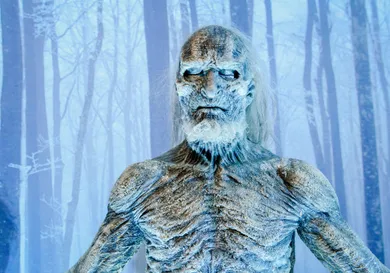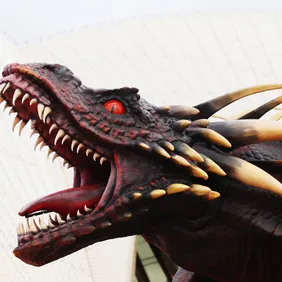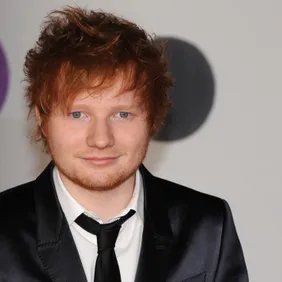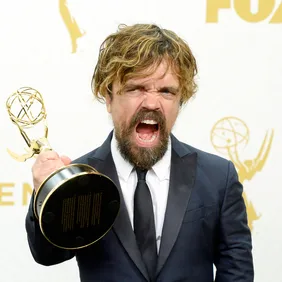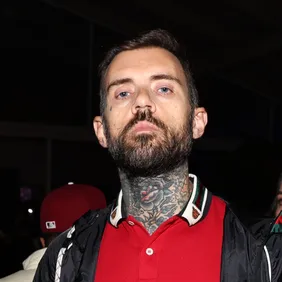When the snow settles, Game Of Thrones will be heralded as one of television's crowning achievement. Weaving complex storytelling, a compelling cast of characters, and a dedicated cast and crew, HBO's acclaimed dark fantasy opus stands on the verge of conclusion. After seven seasons, thirty-eight Emmy wins, and the longest wait for winter in recent memory, the Season 8 premiere is mere weeks away. With hype reaching an all-time high, many have turned to the rewatch, eager to relive the sprawling epic before the swan song. Now, in honor of the dedicated Game Of Thrones fiends, it's due time pay homage to some of the series' strongest episodes.
Naturally, SPOILERS lie below.
Game Of Thrones Season 8 Trailer
10. Kissed By Fire
Season 3, Episode 5
“Kissed By Fire” marks the midway point of Season 3, lacking the spectacle a later entry might deliver. Yet the Alex Graves directed “Kissed By Fire” features no shortage of excellent character moments, including arguably the best acting performance in Thrones thus far: Jaime Lannister’s bathtub confession to Brienne of Tarth. In Season 3, Nikolaj Coster-Waldau’s Jaime underwent a redemption arc, suffering significant dismemberment at the hands of the sadistic Locke. Through Brienne, Jaime’s character was given room to develop, culminating in a powerful reflection on honor, duty, and revisionist history. As he revealed the truth behind his “Kingslayer” moniker, spilling out a pained resentment of Ned Stark in the process, Jaime solidified himself as one of GOT’s most compelling characters.
Along with Jaime’s pivotal moment of development, “Kissed By Fire” also finds Jon Snow losing his virginity, The Hound clashing with eventual traveling companion Beric Dondarrion, and Robb Stark engaging in a rare moment of moral ambiguity. A deeply personal and introspective episode across the board, the Bryan Cogman penned “Kissed By Fire” proves that Game Of Thrones belongs alongside any great character-driven drama.
9. Baelor
Season 1, Episode 9
Game Of Thrones has developed somewhat of a misconstrued reputation, pertaining to the wanton slaughter of its main characters. To be fair, Thrones boasts a respectable body count, though seldom do they deviate into murder-for-shock value. It’s likely that the penultimate episode of Season 1, the game-changing “Baelor,” played a role in shaping that misconception. In fairness, seeing the perceived “main character” beheaded at the command of the loathsome King Joffrey sent a powerful message. For many viewers, the death of Ned Stark brought forth a harsh recalibration of expectations. When the sword descends, and the fool’s hope for a last-minute deus-ex machina fades, the story of Ned Stark is brought to an unceremonious conclusion.
As so much has transpired since the events of Season 1, it’s easy to forget about the impact “Baelor” had on the greater storyline. Even now, Ned’s presence remains felt throughout, kept alive through his surviving children - and Jon Snow. Aside from Ned’s death, “Baelor” also featured no shortage of memorable moments; Jorah’s duel with a Dothraki bloodrider, Daenerys succumbing to the whims of dark magic, the capture of Jaime Lannister, and Tyrion’s first taste of battle. All things considered, the Alan Taylor-directed “Baelor” stands as a crowning Thrones achievement and deserves no shortage of due credit.
8. The Lion And The Rose
Season 4, Episode 2
“The Lion And The Rose” is bookended by a pair of equally gruesome scenes, beginning with Ramsay Bolton’s gleeful outdoor excursion, and ending with the deformed, poisoned face of the late King Joffrey; where one villain dies, another more twisted villain is born. While much is rightly made of Joffery’s long-awaited death and the ensuing developments, Season 4’s second episode solidified House Bolton as a lasting and dangerous player, that would nearly spell the end of the beloved Jon Snow. “The Lion And The Rose” also marks the introduction of a bromance between Jaime and Bronn, a partnership that would play an integral role in the latter’s quest for upward mobility.
Naturally, the “Purple Wedding” was the centerpiece. The tireless work of set designer Deborah Riley deserves full credit, as she and her team brought a Westerosi royal wedding to life in spectacular fashion. With cameos from Sigur Ros, no shortage of passive-aggressive exchanges between beloved characters, and the swan song of Jack Gleeson’s delightful bastard King Joffrey, “The Lion And The Rose” knocked a key piece off the board, rearranging the pieces in a major way.
7. The Mountain & The Viper
Season 4, Episode 8
Reputation is among the dominant themes in Season 4 standout, “The Mountain And The Viper.” The Mountain’s reputation has been well established; tales of his brutal penchant for violence, rape, and torture have been planted throughout the series. Oberyn Martell, the titular Viper, likewise has a dangerous rep, though one far less steeped in infamy. The look of surprise on Jaime’s face upon seeing The Viper’s martial prowess in action speaks volumes. Tyrion Lannister is undone by his own reputation, deemed prematurely guilty by the same people he once played a role in saving. Even Theon Greyjoy’s reputation as the trueborn heir of the Iron Islands allows him to negotiate the successful transfer of Moat Cailin, only for Ramsay to shatter the peace with flaying knife in hand.
While the Red Wedding stands as one of Game Of Thrones’ most brutal moments, the gruesome death of Oberyn Martell stands beside it. The trial by combat between Gregor Clegane and The Red Viper is already rippling with tension, even without Tyrion’s fate in the balance. Between the juxtaposing combat styles, the furious cries of Oberyn’s fierce reminder, and the ever-shifting defiance of expectation, director Alex Graves, Pedro Pascal, Halfthor Bjornsson brought one of the book series’ most powerful scenes to life in an emotional and crowd-pleasing fashion. Unfortunately, it all ended in a burst of mushy pulp.
6. Blackwater
Season 2, Episode 9
It’s easy to mistake the inclusion of battle episodes for a simple love of spectacle. Yet a battle in Game Of Thrones only works because of the characters involved. By the time “Blackwater” rolled around in Season 2’s climactic stages, each of the involved participants were fleshed out and for the most part, relatable. As per usual, the combat came equipped with a moral quandary. You might not enjoy cheering for Joffery or Cersei (although we all quietly root for Cersei, do we not?), but a Lannister loss all but seals the fate of fan favorites like Tyrion, Bronn, and The Hound. And while Stannis was a relative newcomer to the series, the fact that his claim was sound kept his cause worthy of championing. Plus, a commander who braves the battlements himself is always worthy of respect.
Though “Blackwater” was indeed the first large-scale battle to occur in Game Of Thrones, arriving complete with a green-tinted mushroom-shaped Wildfire cloud, some of the finest moments occurred in Maegor's Holdfast, where the women and children of the King’s Landing “one percent” were being housed. It was there that Cersei and wine would become one. Lena Headey’s performance has been a consistent point of brilliance throughout the series, but she’s in particularly fine form throughout “Blackwater.” Though her disdainful nature in doling out harsh truths to Sansa suggests resentment, there’s a case to be made that Cersei is simply playing the OG, seeing elements of herself in the young Stark. Such a parallel is even highlighted way down the road in Season 7, when Jon Snow reflects on their relationship. “It’s almost as if you admire her,” he muses, a testament to one of “Blackwater’s” more fascinating dynamics.
5. The Children
Season 4, Episode 10
While Season 4 finale “The Children” features little in the way of epic warfare, it does deliver one of the best action sequences in series history. Watching fan-favorites Brienne and The Hound engage in a savage fight to the death, evocative of Deadwood’s notorious duel, brought the brutality of a brawl to life with little glamorization. The battle is made all the more difficult by an ungrounded moral compass, which in turn speaks to the brilliance of Thrones’ characters. While dramatic scenes allow actors to flex their chops, not everyone can sell a battle. Both Rory McCann and Gwendoline Christie turn in powerful performances that should not be undersold.
And that’s not even the biggest development. Tyrion Lannister, the scorned prisoner, escapes with the help of Jaime and Varys. Upon seeking a parting word with Tywin, Tyrion discovers that his father has been seeking the carnal comforts of his former lover, Shae. The Imp proceeds to “get the strap” as it were, and confronts his father during a midnight bowel movement. The ever-regal Tywin, portrayed brilliantly in a tour de force performance by Charles Dance, soon found himself murdered by his own son. A fate both poetic and appropriate, given the parallels shared by both men - though Tywin himself would loathe to admit it. Packed with story developments (including the welcome return of Mance Rayder, and a heroic moment for the divisive Stannis), “The Children” brought the many narrative threads of Season 4 to a close, while setting the board for a bleak and unforgiving fifth chapter.
4. The Rains Of Castamere
Season 3, Episode 9
The “Red Wedding” has become one of the defining moments in television history. Book-readers, long privy to the macabre twist, derived ghoulish pleasure in capturing the reactions of the uninitiated. It wasn’t so much that King Robb Stark, his wife Talisa, and Catelyn Stark were dispatched, but the brutality with which it went down made “The Rains Of Castamere” a disturbing and powerful turning point in the Game Of Thrones storyline. Form the moment Roose Bolton gives his trollish glare (a brilliant moment of facial acting from the slept-on Michael McElhatton), the dining hall transforms into a massacre, the culmination of simmering tension long-built.
In hindsight, Roose Bolton’s final blow through Robb Stark’s chest is a transitional moment, in which the Bolton house cements itself as a lasting player in the narrative, soon to displace the doomed King Joffery. To see Robb Stark, a bastion of honor in a world of corruption, slaughtered in such a matter leaves a lasting impact. Yet it is through Michelle Fairley’s final moments as Catelyn Stark that the nightmarish apex is reached. Slitting a Frey girl’s throat while uttering a primal scream, Catelyn meets her end in much the same fashion. While it’s difficult to discuss “Rains” without focusing on the “Red Wedding,” the episode does happen to feature a few well-placed moments of Jorah Mormont badassery, in which he, Grey Worm, and Daario Naharis skillfully dispatch a contingent of Yunkai goons (who existed solely to be dispatched in badass fashion). Yet no amount of sword-wielding finesse can soften the blow of the inevitable trauma, a trauma that many Stark loyalists still nurse to this day.
3. The Winds Of Winter
Season 6, Episode 10
It would take an antagonistic force like the High Sparrow and his merry band of followers to thwart the likes of Cersei Lannister. Conversely, it would take a uniquely ruthless mind like Cersei Lannister to strike back in appropriate fashion. By the time the Season 6 finale rolled around, many viewers likely found themselves facing a conundrum; how were they to cheer for such a devious and uncaring person? And yet, given the brutal punishment Cersei enduring during her “Walk Of Shame,” it became almost understandable to champion for her victory. The opening ten minutes of “The Winds Of Winter” reveal her elaborate revenge plot coming to fruition, all soundtracked by unsung hero Ramin Djawadi’s haunting “Light Of The Seven.”
With multiple characters converging in a brilliantly strung together piece of filmmaking, Cersei watches from the sidelines as a slew of her enemies are wiped out in one fell swoop. Bookended by a deliberately silent long take of King Tommen’s suicide, and “The Winds Of Winter’s” opening moments stand among the series’ finest. The fact that this is simply the first ten minutes speaks to the powerhouse nature of this episode, which also happens to include yet another “King In The North” speech; this time, rather than trueborn Stark heir Robb, it’s the bastard Jon Snow who takes up the mantle. At this point, it’s fair to say that anything Miguel Sapochnik touches, at least where Thrones is concerned, is likely to end up on many-a-list of this nature.
2. Hardhome
Season 5, Episode 8
Though it’s hard to believe now, the Army Of The Dead largely felt like an afterthought, leagues removed from the majority of the principal characters. That all changed with "Hardhome," another installment from the arguable Thrones directorial MVP, Miguel Sapochnik. Though several storylines are touched upon, including the return of a post-Reek Theon Greyjoy, and a continuation of Cersei’s mental battery at the hands of Septa Unella, the entrance of the Night King and his horde remain the episode’s largest takeaway. With welcome development from Tormund Giantsbane and Dolorous Edd, and further exploration of Jon Snow’s “Kingly” diplomatic tendencies, “Hardhome” quietly raised the stakes before delivering nearly twenty-straight minutes of ice and death.
It’s almost unfair to call this one a battle; it’s more of a massacre, as The Night King’s forces make short work of the wildlings brave enough to fight. Closing with an iconic grin from the Night King, “Hardhome” concludes on a truly chilling note. Of course, given the bang with which it ends, many of the earlier scenes are left unsung. It would be unwise to forget about the first meeting between Tyrion and Daenerys, at once suitably tense and ripe with mutual respect. Given their current dynamic, fans might one day be able to examine this scene under a new lens. Until that day, however, it remains an enjoyable exchange between two heavyweight characters, and a chance for both Dinklage and Clarke to shine.
1. Battle Of The Bastards
Season 6, Episode 9
To this day, Game Of Thrones fans hold director Miguel Sapochnik in near diety-esque esteem. His masterful work on “Battle Of The Bastards,” the climactic episode of season six, is one of the many reasons. On a purely technical level, the titular battle marked the biggest spectacle in Thrones history, with an extensive making-of featurette revealing the detail behind its creation. Kit Harrington actually stood in front of a charging cavalry of stunt-riders, making for one of the series’ most iconic shots. Guided by Sapochnik’s work behind the camera, including a brutal and chaotic long-take through the battlefield, each contributing cast member turns in a powerful performance, speaking volume with frenzied glares and grunts.
“Battle Of The Bastards” also serves as a satisfying wrap to a long-running antagonist, Ramsay Bolton. A worthy counterpart to Jon Snow, Ramsay proved to be a cunning and cruel foe, who met an equally cruel demise at the hands of Sansa Stark. And though it seemed unlikely that Jon, Tormund, Davos, or Sansa would die, the episode succeeded in delivering an appropriate level of hopelessness not often seen in a battle of this nature. Seeing Jon Snow nearly suffocating under the weight of the dead, and his subsequent emergence into the chaos is among the series’ most evocative pieces of filmmaking. And that’s not even touching on Daenerys’s Eastern conquests, which wrap in a swift, decisive, and highly enjoyable fashion. “Battle Of The Bastards” is an achievement on every level, and a testament to Game Of Thrones at its most powerful.
